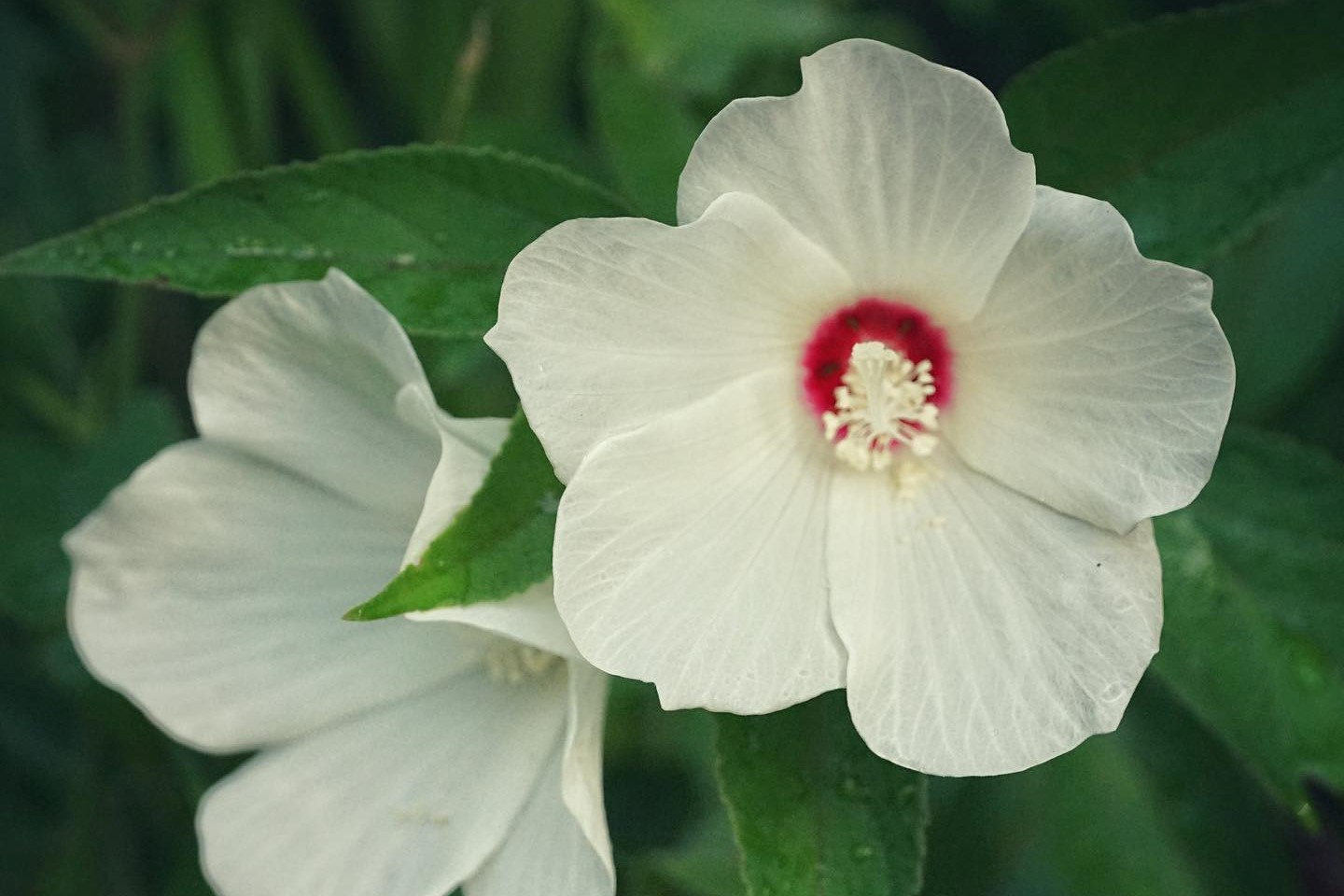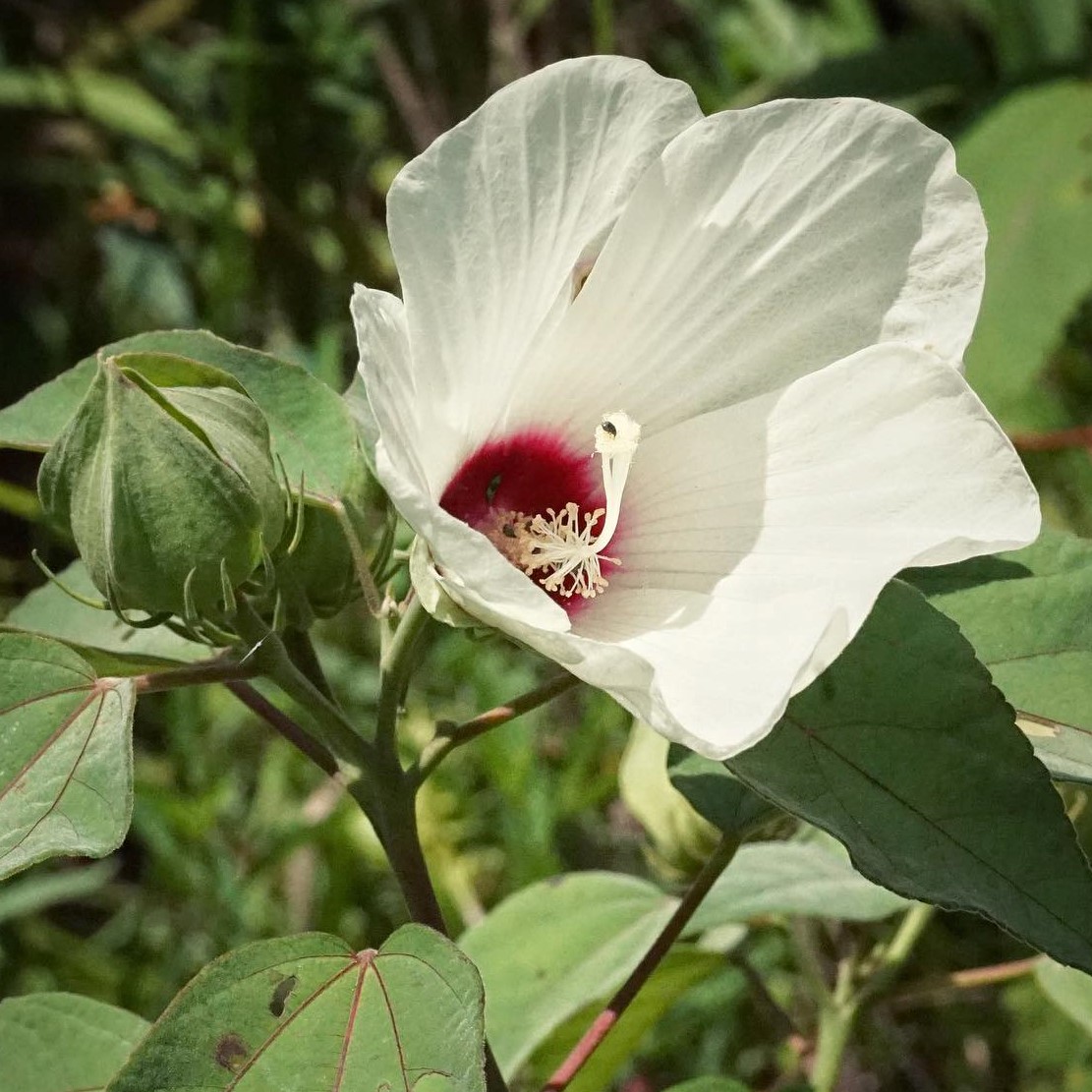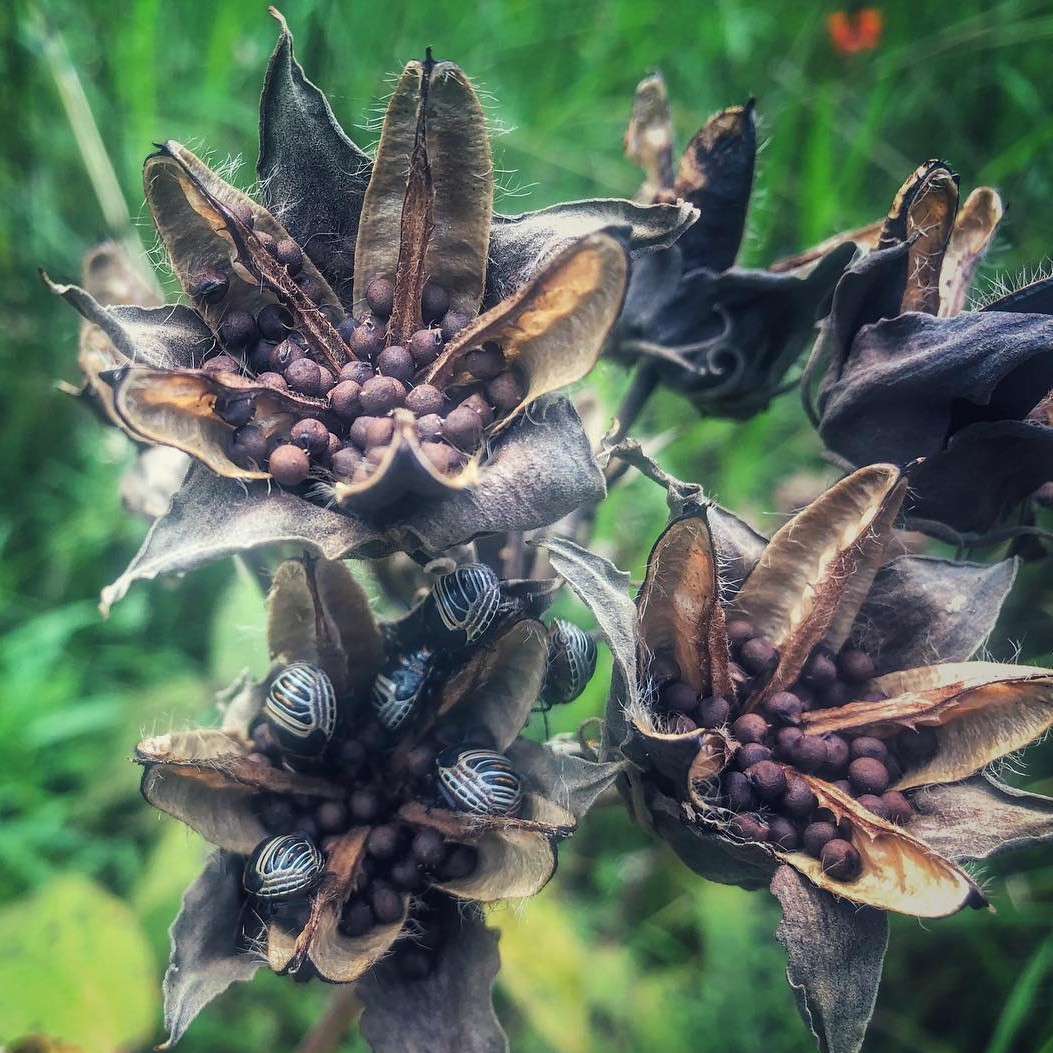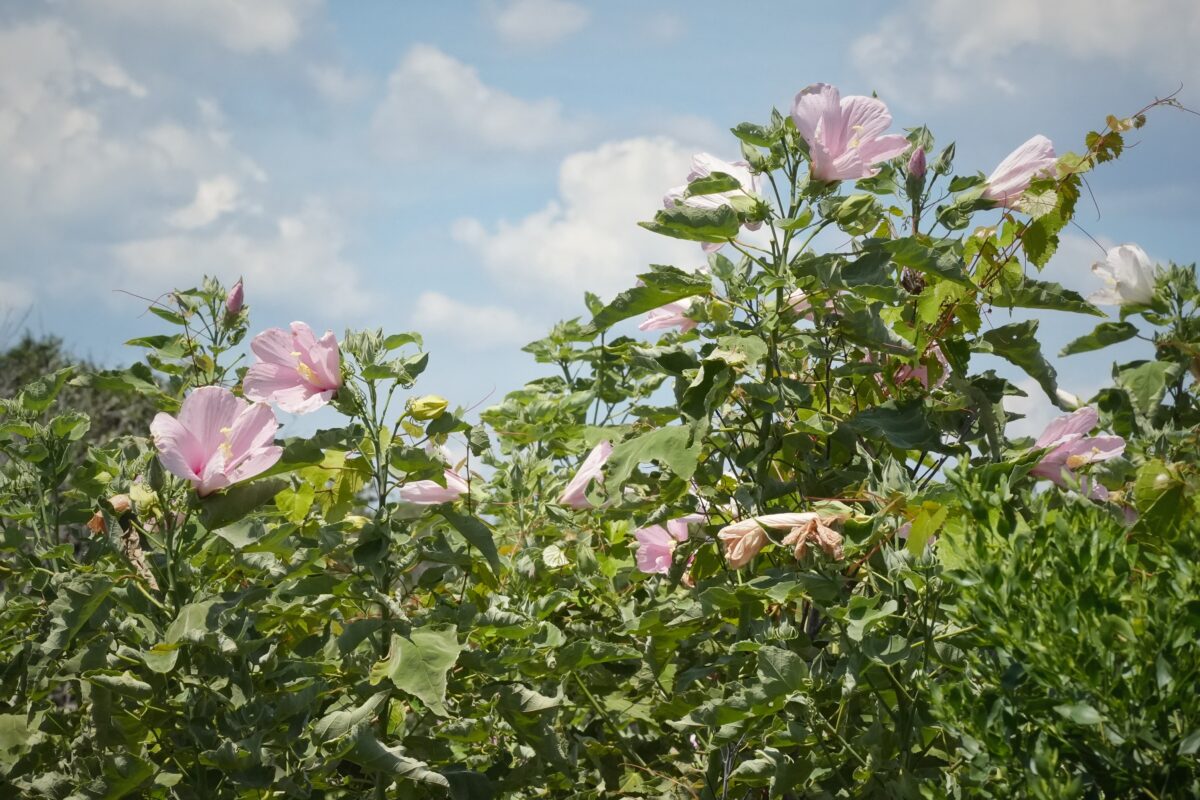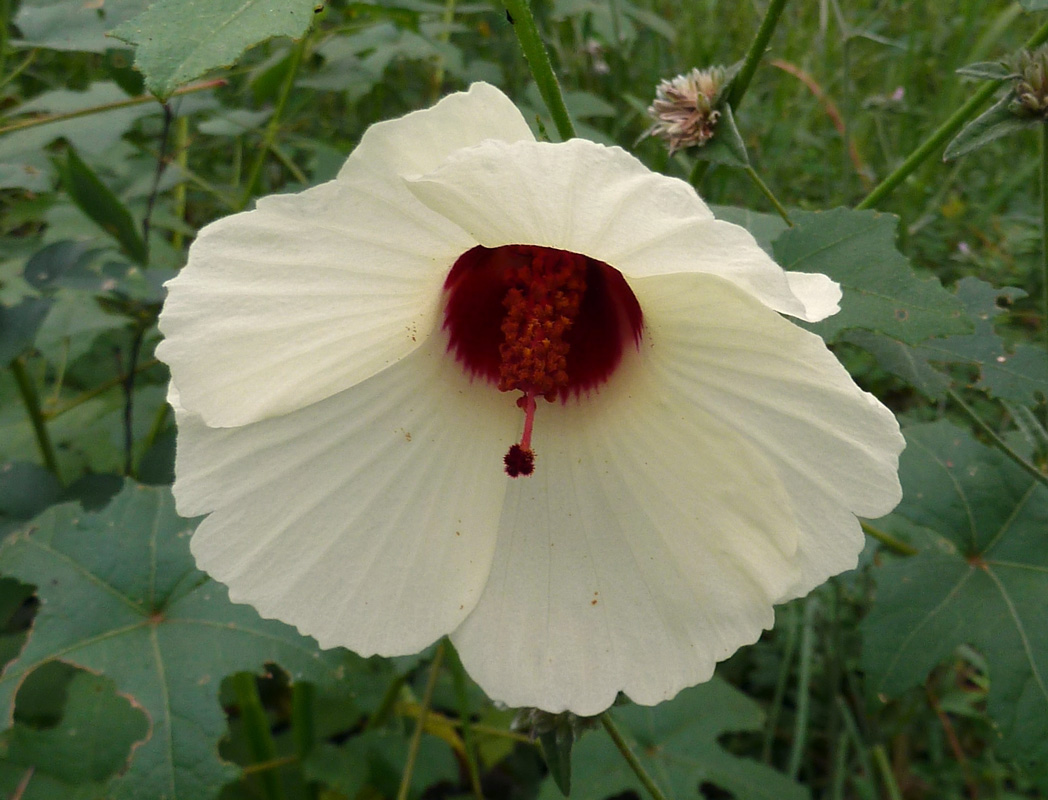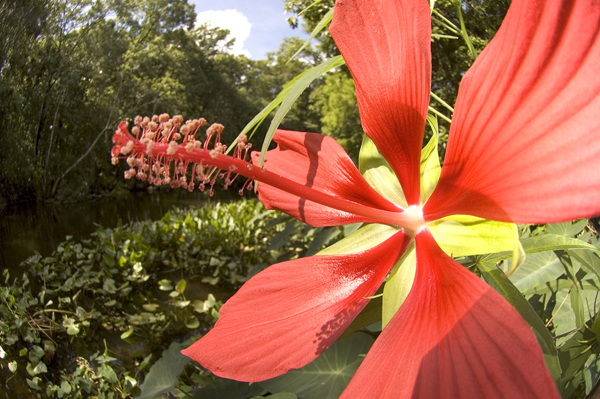Crimsoneyed rosemallow
Pictured above: Crimsoneyed rosemallow (Hibiscus moscheutos) by Emily Bell. Click on terms for botanical definitions. View post as a PDF.
In early to mid-summer, North Florida wetlands and roadside ditches are adorned with the big brilliant white flowers of Crimsoneyed rosemallow (Hibiscus moscheutos). This wildflower blooms profusely and has an abundance of wildlife value. It is pollinated primarily by bees, with bumble bees and solitary anthophorid bees being the most common visitors. The plant also provides nectar to butterflies and is a larval host to many Lepidoptera including Gray hairstreak, Painted lady, Common checkered skipper and Tropical checkered skipper butterflies, and Io and Delightful bird-dropping moths. Its plethora of seeds are consumed by many birds including the Northern bobwhite quail. Birds like the Redwing blackbird nest in the plant.
Crimsoneyed rosemallow flowers are saucer shaped with five spreading white petals and a deep red to crimson “eye” in the flower’s center from which a creamy white to pale yellow staminal column protrudes. Flowers can reach up to eight inches in diameter. The semi-woody stalks have 3- to 6-inch long by 1- to 3-inch wide oval-shaped toothed leaves that are alternately arranged. They are grayish-green with paler to silvery pubescent undersides. After flowering, 1- to 3-inch green beaked capsules form. They turn brown before bursting open to release an average of 120 brown round seeds.
The genus name Hibiscus is from the Greek hibiskos, or “mallow.” The species epithet moscheutos means “musk-scented” in Latin.
Family: Malvaceae (Mallow family)
Native range: North Florida and south to Lake County.
To see where natural populations of Crimsoneyed rosemallow have been vouchered, visit florida.plantatlas.usf.edu.
Lifespan: Perennial
Soil: Wet to moist acidic muck or sand
Exposure: Full sun to part shade
Growth habit: 3-7 ft tall by 2-4 ft wide
Propagation: Seed, scarification required
Florida regions of landscape suitability: North, Central
Garden tips: Crimsoneyed rosemallow requires consistently moist to wet soil to thrive. It makes a great specimen plant at the edge of a garden pond or screen planting along a wetland edge. It can also be grown successfully in a large container. This plant goes dormant in winter and will die back to the ground.
Crimsoneyed rosemallow is available from nurseries that specialize in Florida native plants. Visit www.PlantRealFlorida.org to find a nursery in your area.
Learn more about Crimsoneyed rosemallow from the Florida Native Plant Society and the Institute for Regional Conservation.
For more information on other Hibiscus species, see these resources:

